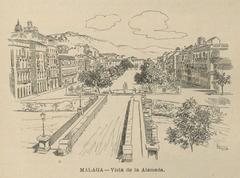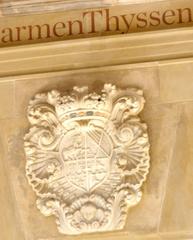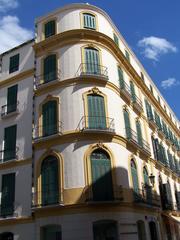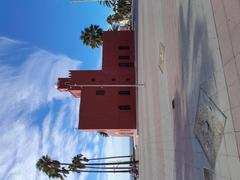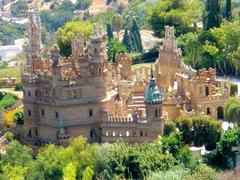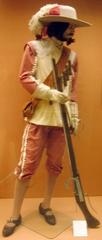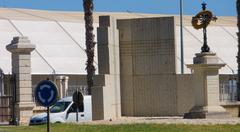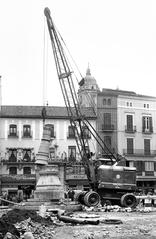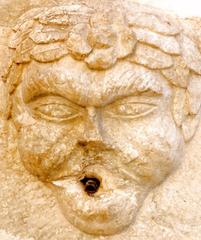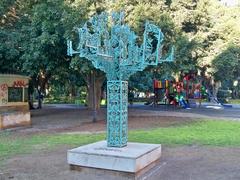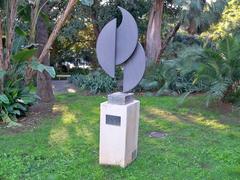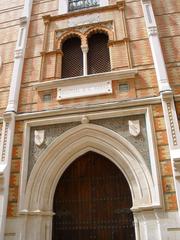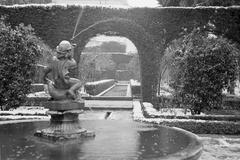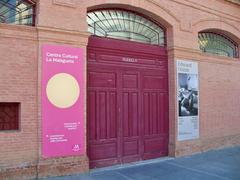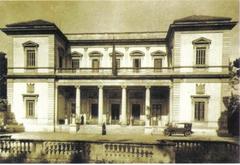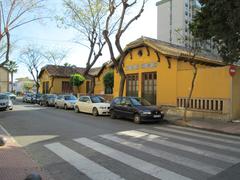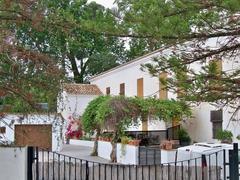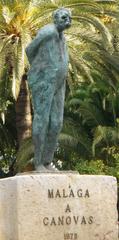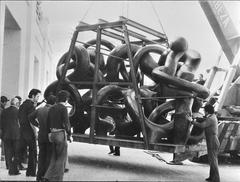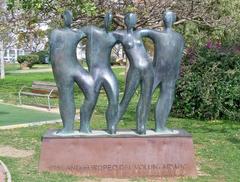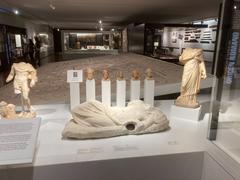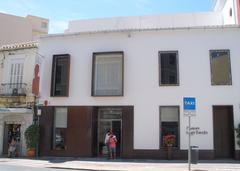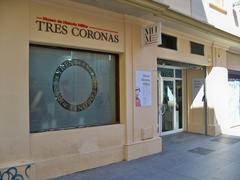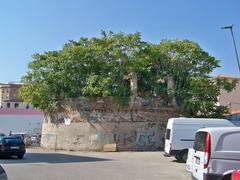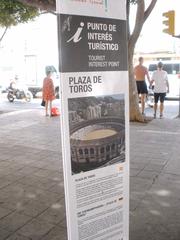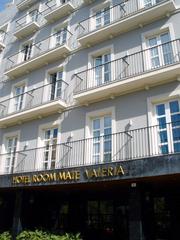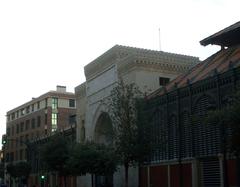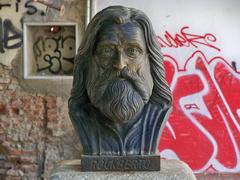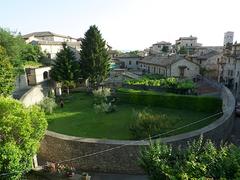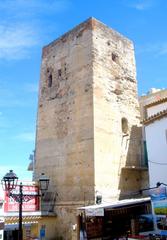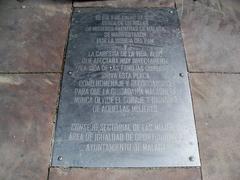Monument to Mary Anne Plews, Málaga, Spain: Visiting Hours, Tickets, and Guide
Date: 03/07/2025
Introduction
Nestled within the tranquil grounds of Málaga’s historic English Cemetery, the Monument to Mary Anne Plews stands as a moving tribute to an extraordinary British philanthropist. Her compassionate legacy contributed greatly to Málaga’s multicultural heritage, symbolizing the city’s openness, religious tolerance, and community spirit during a time of significant social change.
This comprehensive guide provides all the essential information for visiting the Monument to Mary Anne Plews—covering its historical background, artistic and cultural significance, visiting hours, ticket details, accessibility, and nearby attractions. Whether you are a history buff, an art lover, or a traveler seeking Málaga’s hidden gems, this monument offers a compelling insight into the city’s layered past and enduring values of inclusivity and compassion.
For further details and planning, consult the official English Cemetery Málaga website and related heritage resources (English Cemetery Málaga, Málaga History, BBC Travel).
Table of Contents
- Historical Background
- Visitor Information
- Practical Tips
- Frequently Asked Questions (FAQ)
- Conclusion
- References
Historical Background
Origins and Design
The Monument to Mary Anne Plews is located within the English Cemetery of Málaga, Spain’s oldest Protestant burial ground. Commissioned by the British community and maritime organizations, the monument was unveiled in the early 20th century in recognition of Plews’ tireless efforts on behalf of British expatriates and seafarers (English Cemetery Málaga).
The memorial features a striking white marble angel in Victorian funerary style, gracefully holding a cross and gazing downward in serene contemplation. It is set on a rectangular plinth bearing the inscription:
“In sacred and loving memory of Annie, the beloved wife of Edwin Plews of Seville, who died at Málaga, on 8th June 1911, aged 43 years. ‘Into thy hands I commit my spirit; for thou hast redeemed me, o Lord God of my Salvation.’”
This elegant design, with classical motifs and dual-language inscriptions, reflects both the artistic sensibilities of the era and the profound respect held for Plews.
Mary Anne Plews: Life and Legacy
Arriving in Málaga in the 1870s, Mary Anne Plews devoted herself to supporting British sailors, merchants, and their families. As the administrator of the English Cemetery and a leader in the British Benevolent Society, she provided care, medical assistance, and a sense of community for those far from home (British Benevolent Society).
Her efforts ensured that non-Catholic foreigners, once denied dignified burial, had a sanctuary for remembrance and comfort. Plews’ commitment to intercultural harmony and her hands-on stewardship of the cemetery left a legacy still honored today.
Málaga in the 19th Century
During the 19th century, Málaga was a vibrant port city with a growing international community. Catholic burial restrictions previously forced non-Catholics into unmarked graves on the beaches. The English Cemetery, established in 1831, marked a turning point for religious tolerance and modernization in Spain (Málaga History).
The monument’s establishment and continued care mirror broader social reforms and the British community’s influence in shaping a more inclusive Málaga.
Symbolism and Artistic Features
The monument’s angel symbolizes hope, protection, and the ascent of the soul, embodying Victorian ideals of faith and remembrance. The craftsmanship—delicate wings, flowing robes, and expressive features—makes it a highlight of funerary art in Málaga.
Its placement amid the cemetery’s lush gardens enhances its peaceful aura, inviting reflection from visitors and serving as a bridge between personal loss and communal memory (Cementerio Inglés de Málaga).
Impact and Preservation
Mary Anne Plews’ legacy endures through annual commemorations and the ongoing work of the English Cemetery Foundation. Recognized as a Site of Cultural Interest by the Andalusian government in 2012 (Andalusia Heritage), the cemetery and monument are preserved through donations and grants, ensuring their stories are shared with future generations.
Notable visitors, including Queen Victoria Eugenie and writers like Gerald Brenan, have paid tribute here, further cementing the site’s place in Málaga’s multicultural narrative (BBC Travel).
Visitor Information
Location
- Address: Avenida de Príes, 1, 29016 Málaga, Spain
- Setting: Within the English Cemetery, a 15–20 minute walk from Málaga’s historic center and accessible by public transport (Mapcarta)
Visiting Hours
- Usual hours: 9:00 AM – 2:00 PM daily (hours may vary seasonally; check official website for updates)
- Special closures: May occur for events or maintenance
Tickets and Admission
- Entry: Free; donations are encouraged for preservation
- Tickets: Not required for individuals. Guided tours may carry a small fee.
Accessibility
- Paths: Mostly gravel and paved; some uneven areas may pose challenges for visitors with limited mobility.
- Facilities: Accessible restrooms available.
Guided Tours and Events
- Guided Tours: Available in English and Spanish, offering rich historical and artistic context. Tours can be booked on-site or via the cemetery’s website.
- Events: Special commemorations on Remembrance Day, All Saints’ Day, and local cultural festivals.
Nearby Attractions
- Historic Center: Alcazaba, Gibralfaro Castle, Málaga Cathedral, and the Picasso Museum are within easy reach.
- Muelle Uno: A lively port area featuring shops, restaurants, and scenic views (Spain.info).
Practical Tips
- Best Time to Visit: Early mornings or late afternoons for a quieter atmosphere and softer light.
- Footwear: Wear comfortable shoes; expect uneven terrain.
- Photography: Permitted—please be respectful.
- Map: Download or pick up the cemetery map to locate key graves (Cementerio Inglés de Málaga).
- Support: Donations and guidebook purchases help maintain the site.
Frequently Asked Questions (FAQ)
Q: What are the visiting hours for the Monument to Mary Anne Plews?
A: The English Cemetery is typically open from 9:00 AM to 2:00 PM. Always verify on the official website before your visit.
Q: Is there an admission fee?
A: Admission is free; donations are encouraged.
Q: Are guided tours available?
A: Yes, in both English and Spanish, providing in-depth insights into the cemetery’s history and art.
Q: Is the site accessible for people with disabilities?
A: While much of the cemetery is accessible, some paths are uneven. Advance planning is recommended for those with mobility concerns.
Q: Can I take photographs?
A: Yes, photography is allowed. Please be mindful of the site’s solemn nature.
Conclusion
The Monument to Mary Anne Plews stands as a testament to Málaga’s rich multicultural history and the transformative power of humanitarian dedication. Its serene angelic sculpture and tranquil setting within the English Cemetery invite visitors to reflect on themes of compassion, cultural integration, and remembrance.
Whether you are drawn by art, history, or the stories of Málaga’s diverse communities, this monument is a rewarding destination. Enhance your visit by joining a guided tour, attending commemorative events, or exploring nearby historic landmarks. By engaging with the site, you contribute to preserving Málaga’s unique heritage and fostering ongoing intercultural dialogue.
For the latest updates on visiting hours, special events, and related historical sites, consult the official English Cemetery website and consider downloading the Audiala app for curated cultural tours. Embrace the opportunity to connect with Málaga’s layered history and the enduring legacy of Mary Anne Plews.
References
- English Cemetery Málaga
- Málaga History
- BBC Travel
- British Benevolent Society
- Andalusia Heritage
- Explora Málaga
- Mapcarta
- Spain.info
